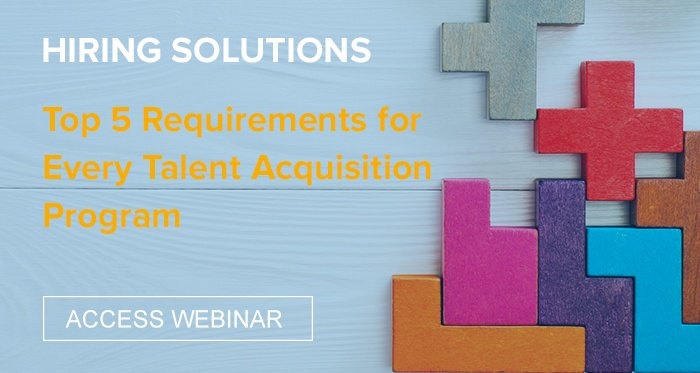Who are your customers? This is a fundamental question to any business, but one that talent acquisition teams have been tangling with more and more as recruitment marketing plays a greater role in the acquisition of highly skilled, passive candidates.
Operating your business in a way that serves your customer base at every step of the process, no matter who your customers are, is one of the key components of creating a successful talent acquisition program says John Hess, executive vice president of operations at Advanced RPO, a Chicago-based recruitment process outsourcing provider.
A customer-centric work process requires a careful review of several organizational areas that touch on customers, says Hess. First and most crucial among them: organizations must identify all of their customers.
Who are your customers?
From a talent acquisition standpoint, hiring managers are one of the most commonly addressed “customers,” but talent acquisition programs actually need to look at three types of customers when operating: hiring managers, candidates, and stakeholders or the leadership team, advises Hess.
With each of these customers, you need to understand their needs and what you need to do to create a measure of organizational success when interacting with each.
To do that, your organization needs to return to a staple of an overall successful talent acquisition program – one detailed by Pam Verhoff, president of Advanced RPO, throughout the presentation – regular communication.
“That ongoing communication, that is key,” says Hess. “If you’re not communicating with [customers], you’re not having the conversations about setting expectations and whether you’re meeting their goals.”
These customer-related expectations can naturally change over time, a key concern that can only be successfully identified and navigated with communication.
“The market and needs of your business continue to evolve and change, and so do the needs of your candidates.”
Watch webinar: Top 5 Requirements for Every Talent Acquisition Program
Expanding your customer outreach
In creating a more customer-centric approach to your recruiting program, it pays to have a strong referral program, whether it’s among your existing employees or a way for others outside of the organization to send talent your way.
“The best companies out there have a strong referral program…and engaged employees are your best referral sources. If you don’t have one in place, I would look to start one. And even if you do have one put in place, what can you do to enhance that? That’s where you’re going to get some of your best candidates,” Hess explains.
Part of that outreach relies on the status of your brand reputation – not just externally, but internally as well. Much has been said about the importance of branding when it comes to recruiting, particularly when it comes to recruiting marketing and how branding enables greater visibility in reaching passive candidates. “It’s not just the company’s brand you’re protecting, it’s the recruitment as well,” notes Hess. This protection needs to extend to any outsourced solutions as well – something that RPO take very seriously.
Getting started
So how do you get started? It depends on the type of customers you need to build around, says Hess. Internally, you need to come to an agreement on what the “deliverables” are when designing that process and align that as much as possible to the business objective goals, he notes. Your internal communication process is a big part of making that happen, too, so the frequency and type of communication that creates this conversation needs to work for you.
You also want to look at your current application process. A poor application process can drive strong candidates away before they’ve even completed the application. You want to make it as easy as possible to complete, within reason, says Hess.
“Is it mobile compatible? Is it easy to apply? It’s been statistically proven that the more clicks [candidates need to perform to apply], the more people fall off. The higher-level positions have a problem with this in particular.”
The application process works as part of your overall customer experience, and in turn, reflects on your overall brand. If your job applications are confusing, take too long, or ask for too much information, your customers will get the same impression about your organization as a whole.
And in the end, you want to send out feedback to your organization that your customer-centric movements are paying off. Creating clear goals of what the improvement process looks like and how each goal benefits the company lays the perfect groundwork for keeping the rest of your organization informed and along for the ride.
“You’re looking at building that confidence,” observes Hess.
















